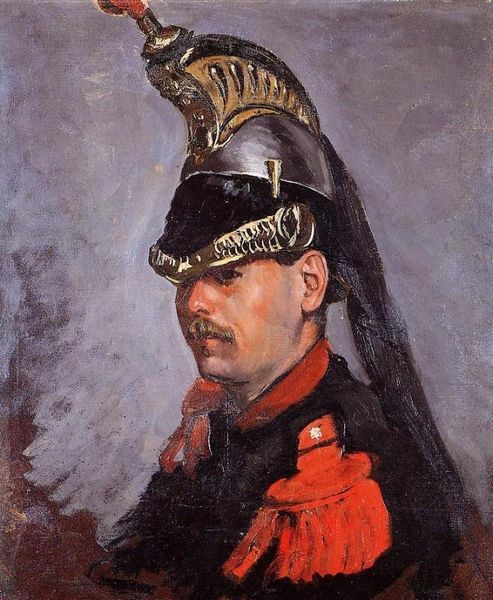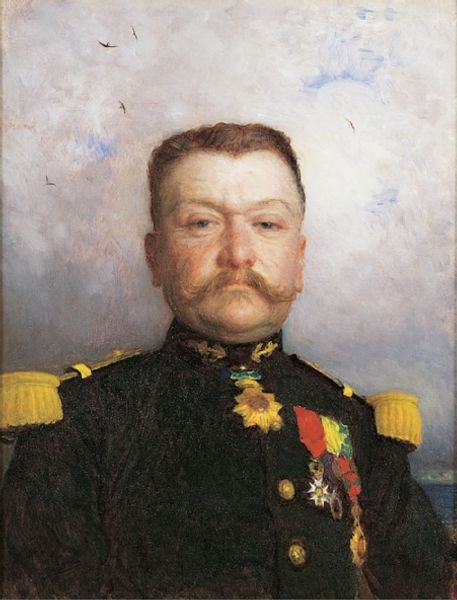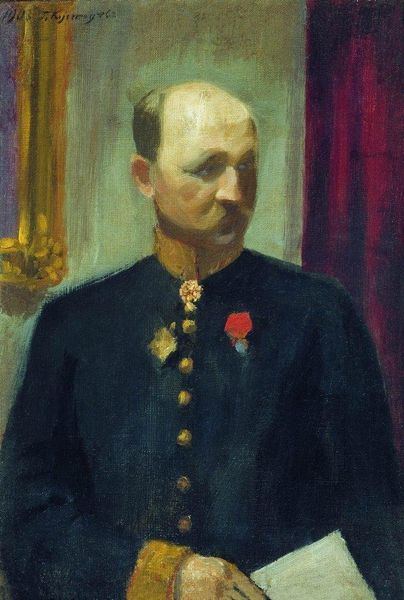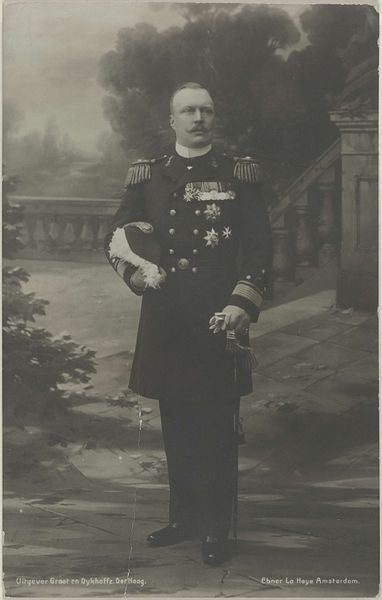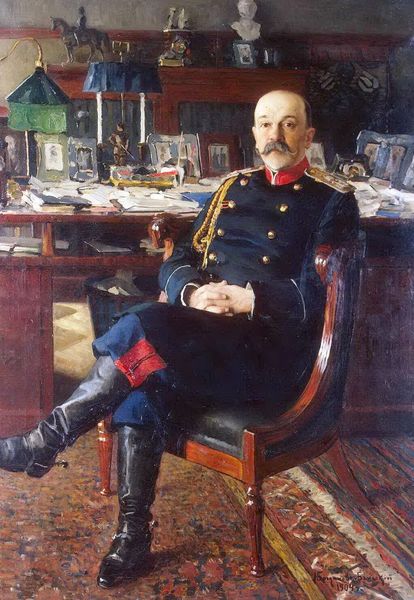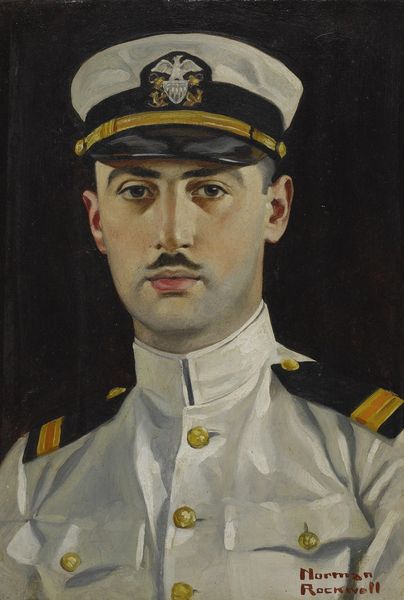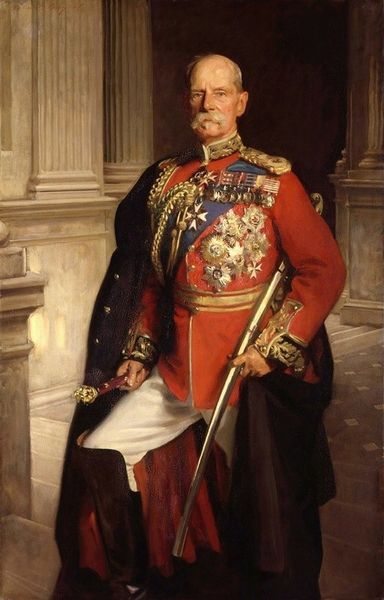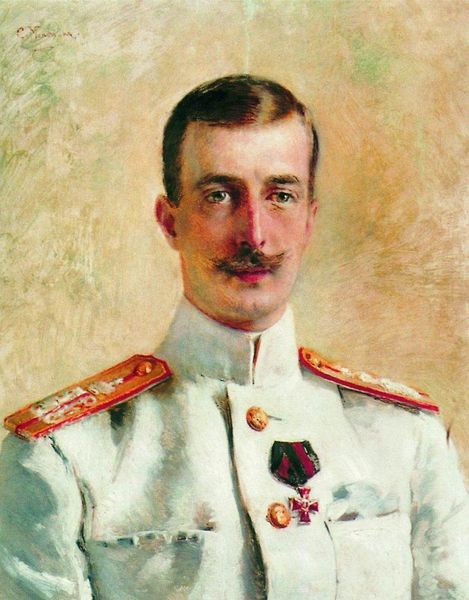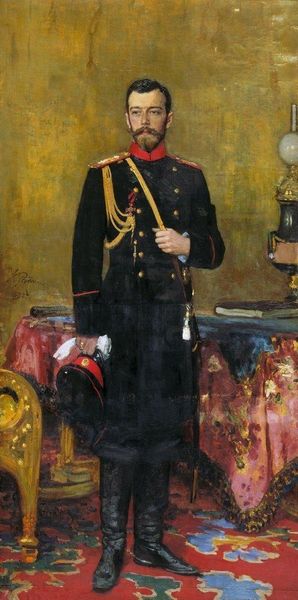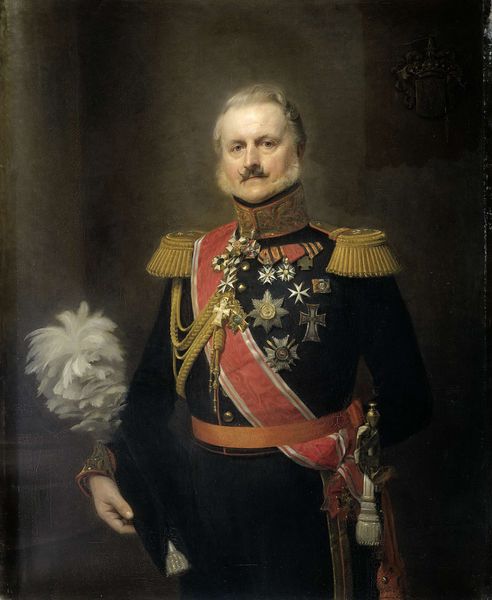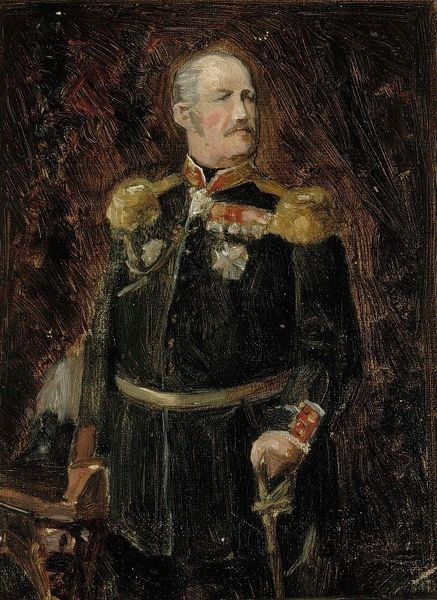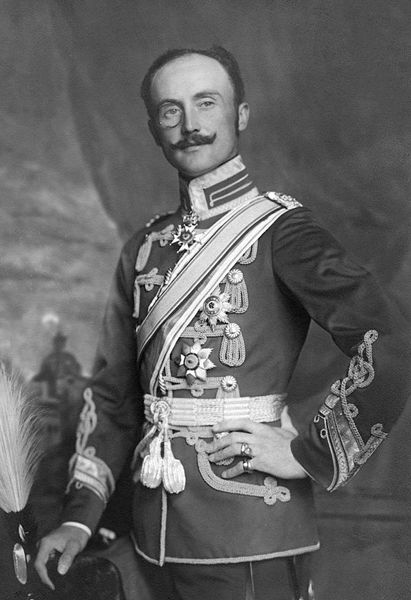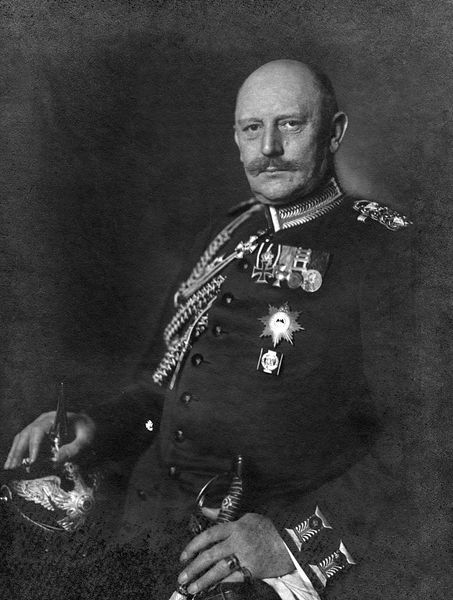
oil-paint
#
portrait
#
oil-paint
#
oil painting
#
russian-avant-garde
#
history-painting
#
realism
Copyright: Public domain
Editor: This is Ilya Repin’s *Portrait of V. Gudovich*, painted in 1913 using oil paint. It feels like such a formal depiction, almost…imposing. How do you read this piece? Curator: What strikes me immediately is how this portrait, created on the cusp of World War I, participates in the established visual language of power and status that was beginning to be questioned and dismantled by avant-garde movements. The rigid pose, the ornate uniform, and the medals are all intended to convey authority. But is it successful in this aim, given the backdrop of revolution brewing in Russia? Editor: That's a really interesting point! So you're saying that this style of portraiture was perhaps becoming outdated at this time? Curator: Exactly! The Russian avant-garde, with movements like Suprematism and Constructivism, was actively rejecting traditional artistic values tied to the Tsarist regime and embracing new forms to represent a transformed society. What audience was Repin attempting to reach with this work, and what impact could the old imagery have at this tumultuous time? Did it serve as nostalgia or reinforce an ever-distant status? Editor: I see what you mean. The stark contrast makes the portrait almost…tragic, knowing what was coming. It also brings up the role of institutions that display such images – are they celebrating a history, or inviting us to reflect upon it critically? Curator: Precisely! The act of exhibiting this portrait today inevitably involves a critical assessment of the power structures it represents, and how these have shifted over time. Editor: I never would have considered those questions looking at just the surface! It highlights how art is truly a product of specific historical and social forces. Curator: It also forces us to ask whether such conventions truly serve their subject. Ultimately, analyzing art in terms of these dynamics allows us a fuller understanding of both the past and present.
Comments
No comments
Be the first to comment and join the conversation on the ultimate creative platform.
